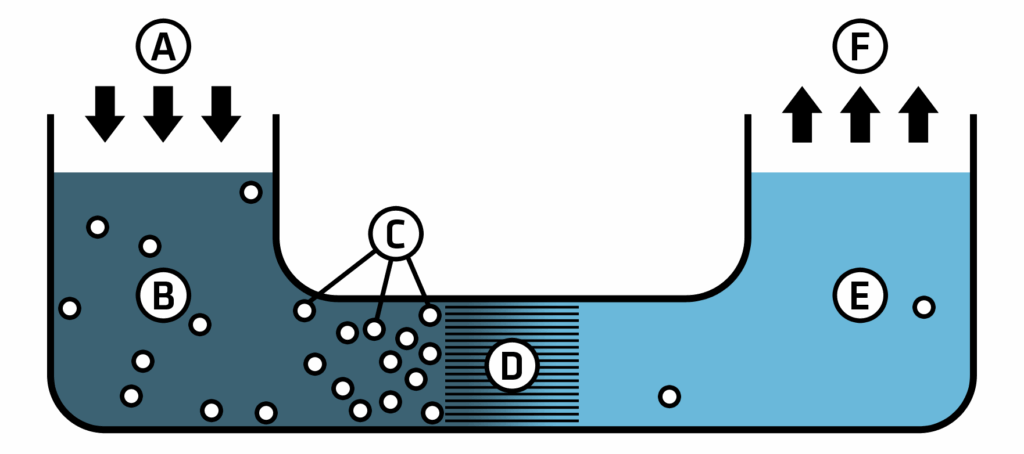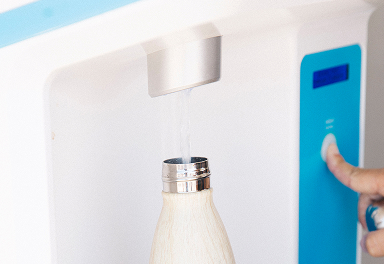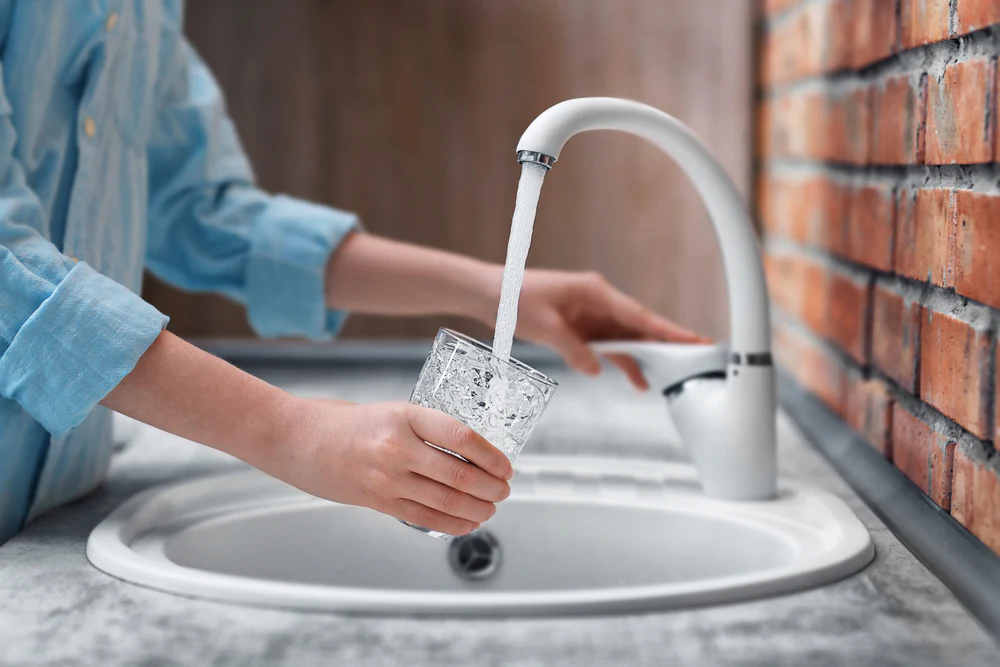If you’ve been researching ways to improve your drinking water quality, you’ve likely come across reverse osmosis (RO) systems. Known for their exceptional ability to remove a wide range of contaminants, RO filtration is one of the most effective water purification methods available for both residential and commercial use. But what exactly is reverse osmosis, and how does it work? Let’s break it down.
Understanding Reverse Osmosis
Reverse osmosis is a water filtration process that uses a semi-permeable membrane to remove impurities from water. Under pressure, water is forced through the membrane, which allows only pure water molecules to pass while blocking contaminants such as:
- Heavy metals (lead, arsenic, mercury)
- Chemicals (PFAS, pesticides, chlorine byproducts)
- Microorganisms (bacteria, protozoa, some viruses)
- Excess minerals and salts
- Sediment and particulates
The result? Cleaner, better-tasting water with significantly reduced contaminants.

How Reverse Osmosis Works — Step by Step
Most RO systems use multiple stages of filtration to ensure thorough purification. Here’s a typical flow:
-
- Pre-filtration:
Water first passes through a sediment filter to remove dirt, rust, and larger particles. Then, it typically goes through a carbon filter to reduce chlorine and organic chemicals that could damage the RO membrane.
- Reverse Osmosis Membrane:
Pressurized water is forced through the RO membrane, which traps contaminants at the molecular level while allowing clean water molecules to pass through. - Post-filtration:
After the RO membrane, water often passes through another carbon filter to “polish” the taste and remove any lingering odors. - Storage & Delivery:
Purified water is stored in a dedicated tank and dispensed through a faucet when needed.
- Pre-filtration:
Benefits of RO Filtration
- Exceptional Contaminant Removal – Removes up to 99% of dissolved salts, chemicals, and harmful substances.
- Improved Taste & Odor – Say goodbye to chlorine taste, musty odors, and metallic flavors.
- Peace of Mind – Especially valuable for areas with questionable water quality or known contamination risks.
- Versatility – Can be used for drinking water, cooking, aquariums, or even medical applications.
Drawbacks to Consider
While reverse osmosis is highly effective, there are a couple considerations to think about before implementing an RO system:
- Wastewater Production: RO systems typically produce a small amount of wastewater for every gallon of purified water.
- Mineral Removal: They remove beneficial minerals along with contaminants (though some systems reintroduce minerals for taste and health benefits).
- Flow Rate: RO filtration is slower than some other methods due to its thorough process.
Who Should Consider an RO System?
Reverse osmosis is ideal for businesses and households with:
- High levels of dissolved solids or minerals in their water
- Known contamination issues (like lead, nitrates, pesticides etc)
- A desire for the cleanest-tasting water possible
Are you curious to see what contaminants are in your local tap water? Check out our free water report tool to get a detailed view of your water quality.
If you want maximum filtration power and don’t mind the extra steps for installation and maintenance, RO is one of the best solutions available.
Final Thoughts
Reverse osmosis filtration delivers some of the purest water you can get in a home setting. By forcing water through a semi-permeable membrane, RO systems can remove an impressive range of contaminants, making them a top choice for anyone serious about water quality.
Whether you’re looking to improve your drinking water’s taste, reduce exposure to harmful substances, or simply enjoy the peace of mind that comes with knowing your water is clean, reverse osmosis offers a proven, effective solution.



